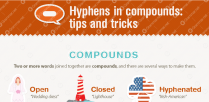In English, a phoneme is the smallest unit of sound. There are around 44, depending on the various accents, and they can be composed of as few as one letter and as many as four. Adding these units of sound together is how words are crafted.
A grapheme is how a phoneme is written down, and it can be a letter of the alphabet, a punctuation mark or other symbol. In short, the phoneme is the sound and the grapheme is how that sound is expressed (a symbol). While there are over 40 sounds in English, there are about 70 combinations to express them, which makes learning to speak English easier than learning to write it.
 Grapheme-phoneme Correspondence
Grapheme-phoneme Correspondence
From birth, we learn the units of sound. When we begin school, we immediately begin to learn how to write the symbols for these sounds, or “grapheme-phoneme correspondence.” The smallest shift in symbols can completely change the meaning of a word, making it drastically different than the previous word.
Bat, ban; right, bright; trap, trip; burn, churn; see, free
The basic graphemes are the twenty-six letters of the alphabet; each has a its own sound, and they are commonly combined in digraphs and trigraphs to further form a single unique sound.
Digraph Examples
CH: church, chimp, beach
EE: street, feet, seem
TH: these, with, the
OE: shoe, aloe, goes
PH: phone, Philly, graph
Trigraph Examples
Much more difficult to find, these must make a single sound and must not be confused with “blended consonants,” which can make more than one.
-igh: sigh, nigh, flight
-tch: match, batch, catch








